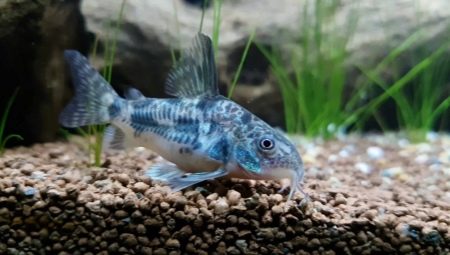Fans of aquarium inhabitants often start unpretentious and quite interesting fish. It’s nice to watch them when you want to escape from everyday worries. Water inhabitants do not require special attention, and most importantly - do not make noise. But from communicating with them it becomes easy on the soul. One of the representatives of the fishing kingdom, which may attract your attention, is speckled catfish.
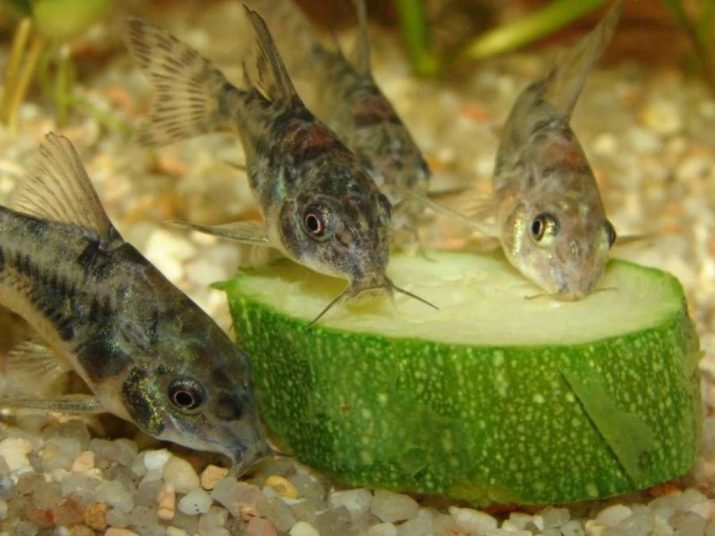
Description
Aquarium catfish are quite popular among breeders. This individual has various variations. The speckled catfish is peaceful and does not require special personal care. Under natural conditions, representatives called corridors (Corydoras paleatus is derived from the Latin words “cory, doras, palea”) inhabit water bodies with clean standing water or very weak currents. They live mainly in shallow water in algae. Their name in Latin means helmet, leather.
You can meet catfish in the wild in the rivers of Paraguay, Brazil and Argentina, as well as the South American continent, Uruguay. Let's get acquainted with its description.
- Spikes (located on the fins under the eyes) perform a protective purpose. Therefore, you can not use the net when fishing. They catfish can catch on the net and get hurt.
- Fish living in nature are endowed with a bright and contrasting color.
- Mustache helps in getting food.
- Mature catfish can reach sizes up to 8 cm.
- Each individual has an individual placer with a pale olive color (there is a blue or green tide).
- Despite the fact that the described fish can remain motionless for a rather long time, it can also be quite active, and it also refers to peace-loving individuals. Yes, and this behavior is characteristic of soms.
- If the catfish rises to the surface, it means that it lacks oxygen. These aquarium inhabitants are capable of making sounds with the help of pectoral fins when they are in danger. Catfish live for about 8 years. Metabolism depends on the temperature regime.
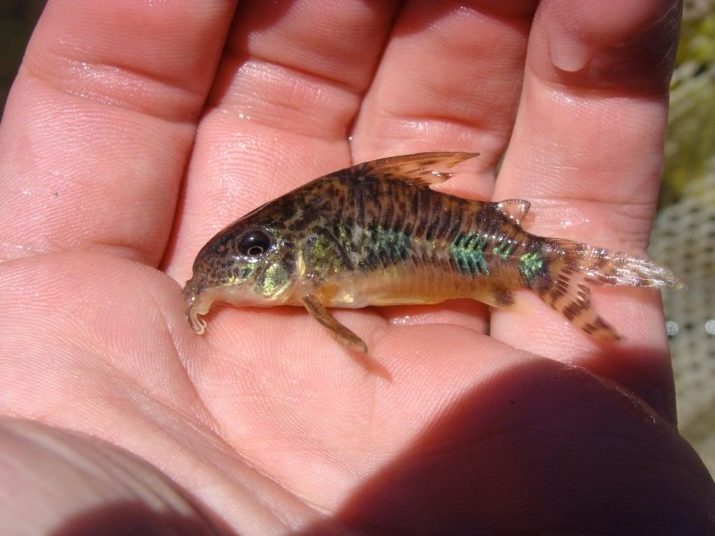
Remember that this breed belongs to fish that do not require careful maintenance. They have a number of positive qualities for which they should be made:
- small size, and therefore does not require a large aquarium (you can take 50 l);
- very beautiful and spectacular;
- eat everything they give;
- accept any conditions of detention;
- practically have no shortcomings;
- however, you need to know that catfish, digging in the aquarium soil, raise particles to the surface, and the water becomes less transparent.
Despite all of the above, remember that catfish also need special care. They do not eat poor-quality feed and do not eat garbage at the bottom.
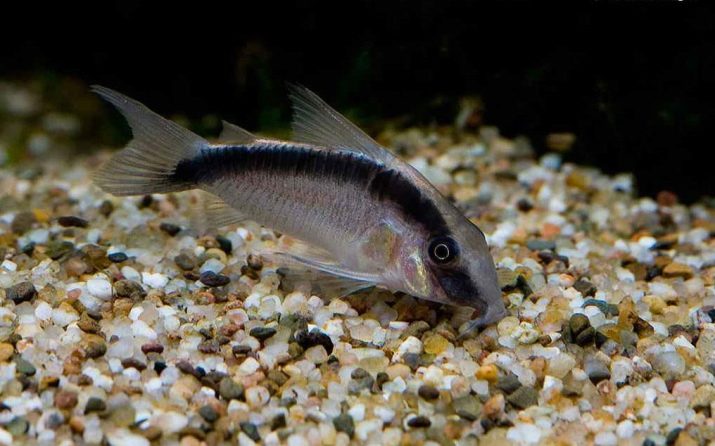
Kinds
These individuals are very successful and have many relatives. There are approximately 150 species that differ not only in color, but also in parameters:
- golden measles (have a gold line in the ridge);
- leopard
- Sherba catfish (body strewn with blotches);
- pandas (colors prevail, as in these bears);
- measles adolf - white fish, nape with an orange mark, and others.
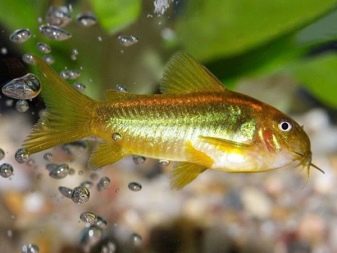
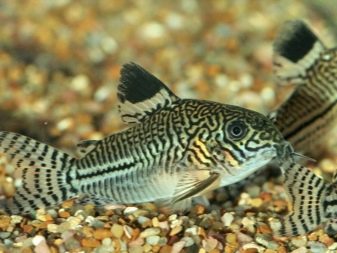
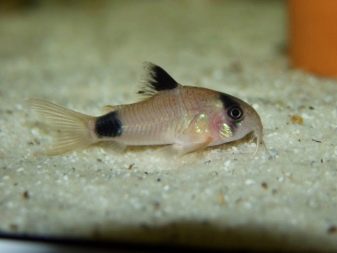
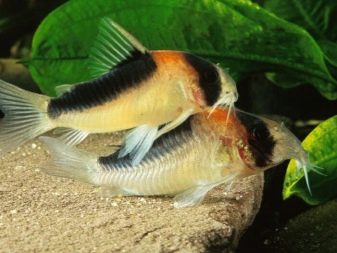
There are a large number of aquarium catfish. So, we list them.
- Chain catfish. They differ from other bone plates that cover the entire body (it is elongated). Adult fish have numerous tentacles (outgrowths) on their heads. The corridor chain catfish are also known as the corridor panda fish or spotted catfish. They have three pairs of antennae and have a very bright color.
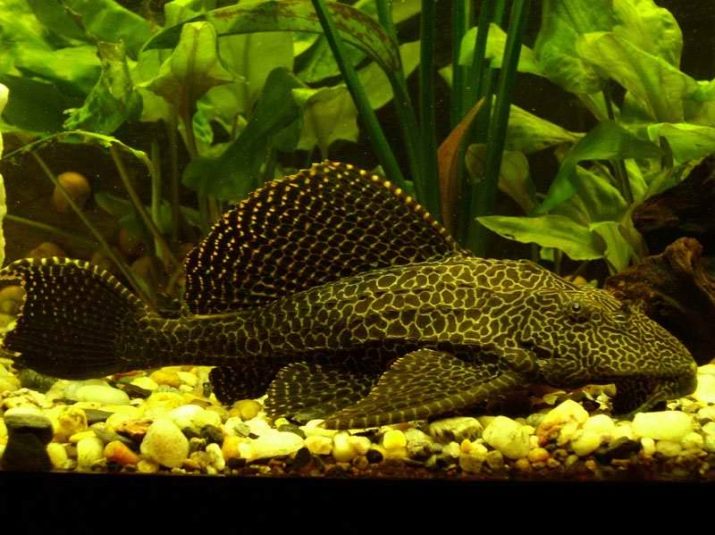
- Antsistrus Albino - This is a variety of Antsistrus (Latin name Ancistrus dolichopterus var. Albino). It differs in color from its ordinary relative. Has a habit of hiding under snags and in other secluded places. There is also golden Antsistrus that has a rich golden color.

- The corridor is veiled. Here breeders tried and deduced the appearance of speckled veil shells. They are inherent olive color with a metallic sheen. The body has dark spots and a small pattern in the form of circles. The fins fly apart like a veil at the moment of movement, whence came such a nickname.
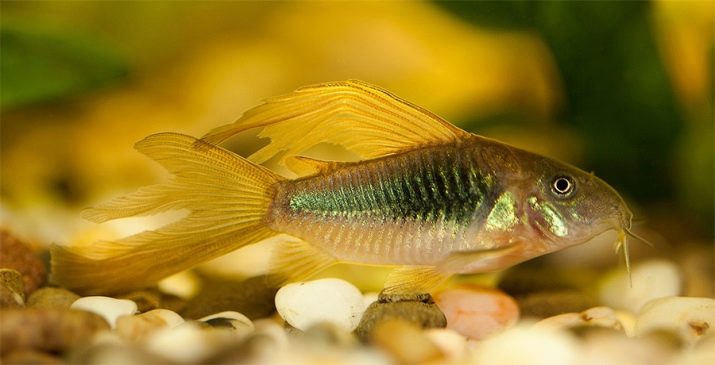
- Pimelodovye or antennae catfish in the wild settle in rivers. For this reason, in the tank, water must be filtered with plenty of oxygen. Active in life. Parameters range from 5 cm to 60 cm in length.
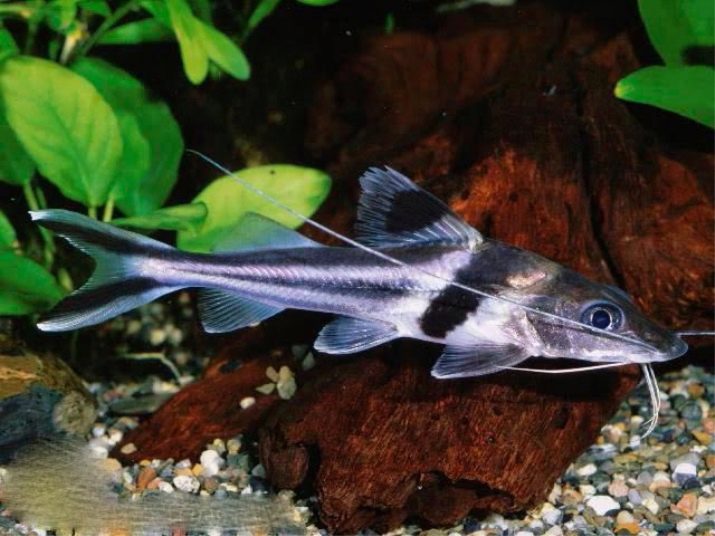
- Agamixes are quite peaceful fish. Dimensions reach 10 cm. Prefer to live at night and hide in holes. They like to dig in the ground. So their location is determined.
To see them well, add coarse sand to the bottom.
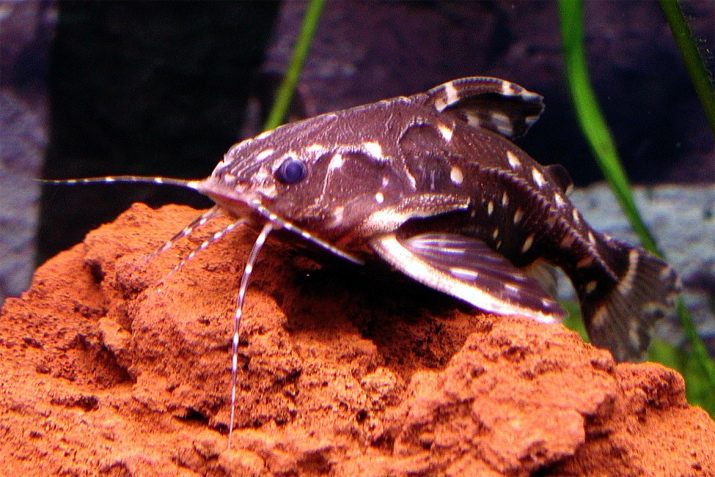
- Pterigoplichitis is an orderly catfish. Get along well in large aquariums with its other inhabitants. They feed on vegetation. With a lack of food, algae is eaten. They hide in secluded places, so you should equip such a house for your pets.
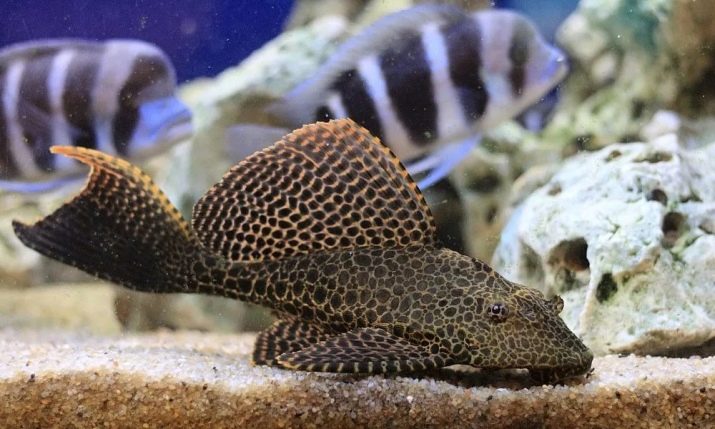
- The sticky fish are a shell armored catfish. There are 30 varieties. They eat only plant foods. You can give cabbage leaves, spinach. Just pour boiling water over them before serving.
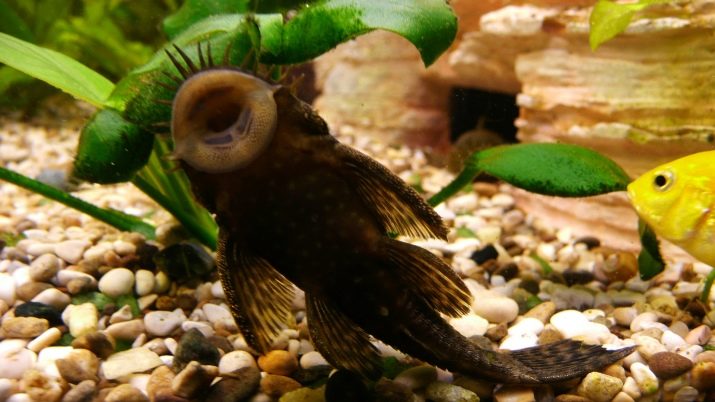
- Loricaria is a family of carapace. Their sizes range up to 12 cm. The males differ from the females in their slenderness and fleecy brush.
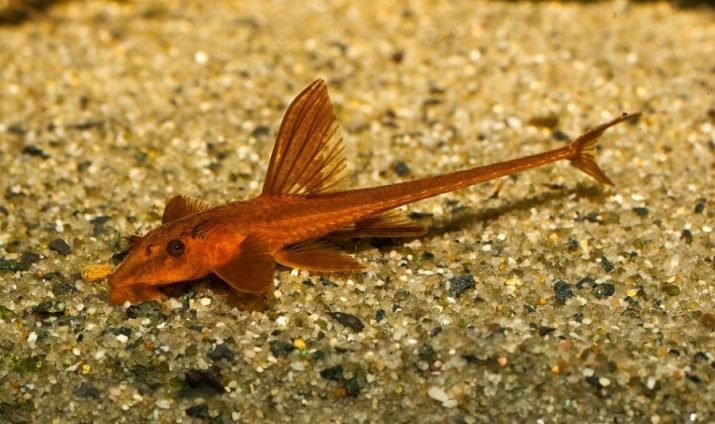
Compatibility
For catfish, the main thing is their own shelter. Therefore, take care of this condition. Somics are very peaceful, and they can be kept even in a jailer with young animals. Without fear, you can place catfish with guppies and live-bearing fish.
Nevertheless, it is not worth keeping these inhabitants of the bottom with slowly swimming fish without scales, due to the fact that corridors can damage their skin. And also it is impossible to settle catfishes in one container with large cichlids.
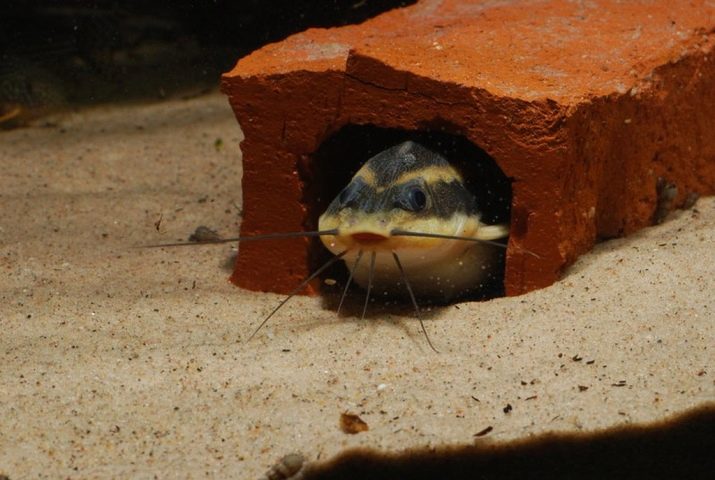
Get along well with the labyrinth lilyus, cockerel, macropods, gourami. Naturally, catfish of different species will find a common language among themselves and get along well. Just provide them all with personal shelters.
Excellent corridors get along with cyprinids (goldfish, cardinal, danios, labeos, barbs).
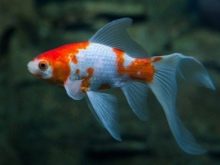
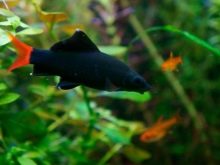
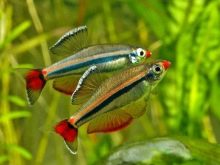
Growing conditions
Although catfish are unpretentious in food and care, there are some subtleties to keep in mind. Let's consider them in more detail.
Let's start by choosing an aquarium. Its volume should correspond to the number and size of populated fish. In the case of catfish, the bottom area should be taken into account. A flock consisting of 8 individuals is placed in a container of approximately 50-70 liters.
A wide range of conditions, maintained by catfish, allows them to be placed with other fish. Water temperature can range from +20 to +29 degrees Celsius, acidity should be about 7.8, water hardness from 0 to 18 units.
No harmful substances are allowed.
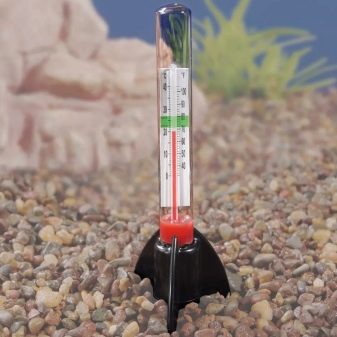
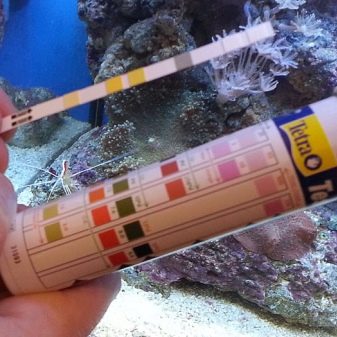
Put coarse sand or gravel at the bottom. The antennae of the catfish are very vulnerable, so do not allow sharp edges. Choose a dark tone of soil. It catfish looks bright.
The scenery may be different. The main thing is that the fish do not get hurt about them. Driftwood is the best option both as a shelter and as a habitat.
Plant the plants so that the fish can move freely. Use moss and fern. The roots should be strong and well fixed. Otherwise, the catfish will tear off the roots of the plants from the ground when they dig in it.
Do not pour salt into the water to prevent disease if catfish live in the aquarium. They can't stand her!

The content of catfish provides for the prevention of diseases. Bacteria and fungi are their enemies. Therefore, if your pets began to eat poorly, their color faded, or you noticed lethargic behavior, folded fins, a whitish coating on the scales - then start to sound the alarm. First, isolate the diseased fish. This should be done when you notice bloating, bruising, ulcerative lesions, white filamentous feces.
Feeding
There is no difficulty in this, since these individuals are omnivorous. Catfish feed on fallen feed and waste. All the same, you should not feed them everything that is at hand. If the fish lack food, they will begin to hurt. Therefore, pour a little more food so that it crumbles to the bottom of the aquarium.
A variety of dry food for bottom fish will solve the problem. Suitable live and frozen artemia, bloodworms, tubule.
It is necessary to add to the diet pills with herbal supplements and daphnia with coronet.
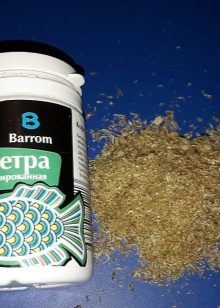
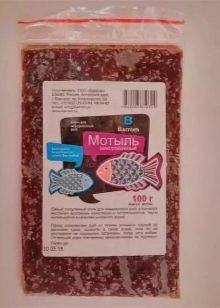
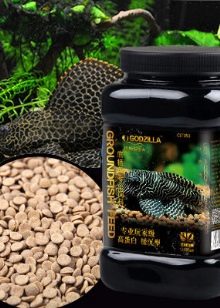
How to determine the gender?
All types of fish have sex differences. In some they are determined quickly, in others it is more difficult. In catfish, sex is determined according to a certain pattern.
- First of all, determine which species your catfish belongs to. A large number of species have their own specific standards.
- Male catfish Dianema has long pectoral fins, and they are longer than that of a female. This is the difference between a female and a male. And also the body of the females is round and full, and the males are slimmer.
- Somik Sparrow. In males, the upper fin is pointed, and females have a more rounded fin. The males, again, are more slender.
- Use the same sex determination parameters for the following species: meta, speckled, catfish Nutterra, leopard, catfish, golden, pygmy.
- The color of female catfish taracatum is white in the lower body. The male differs in the spread of dark spots throughout the body.
- In all species of catfish, females are usually fuller and rounder than males. The main difference is a pale color.
If you are at a loss to make out the floor of the catfish, then remove the fish from the aquarium, turn it over. The male will see a pronounced tubercle with a round hole.
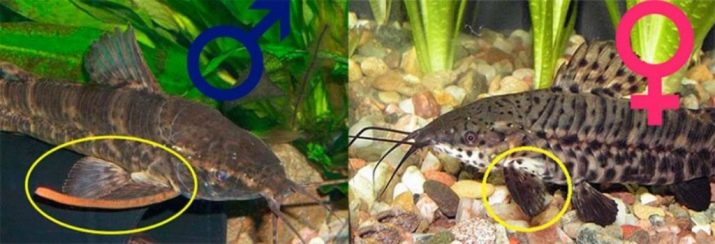
Breeding
Naturally, only strong, healthy and young females and males are taken for breeding. Before you breed youngsters, feed your wards very well. Bloodworms are best suited for this. It favorably affects the process itself and falls pretty well to the bottom.
So, we proceed to the task of obtaining offspring.
- Plant (preferably at night) in the breeding ground 1 female and 3 males. Replace the water with 50% and reach the temperature in the tank for more effect up to + 18 ° C.
- Take care of the lighting. Place a dim lamp and cover the container with material. It is necessary to save a small space where light will penetrate.
- In the place where the light penetrates, you need to put a thick plexiglass. The female will then place the eggs here.
- The spawning process itself will last from 2 to 4 hours. Males will begin to chase the female. Then she will take milk into her mouth and spread it on a glass pad. Then she glues the eggs.
- The laid eggs have a diameter of up to 3 mm. The female will lay about 200 eggs. After this process, transplant the female and males into a common aquarium.
- Water should be perfectly clean. Therefore, sprinkle special antibacterial additives there. Water temperature should be around + 28 ° C.
- After the appearance of fry, lower the temperature to + 20 ° C. Young growth prefers a "live" diet: rotifers, nulia, crustaceans, ciliates. With gradual growth, feed the chopped tubule.
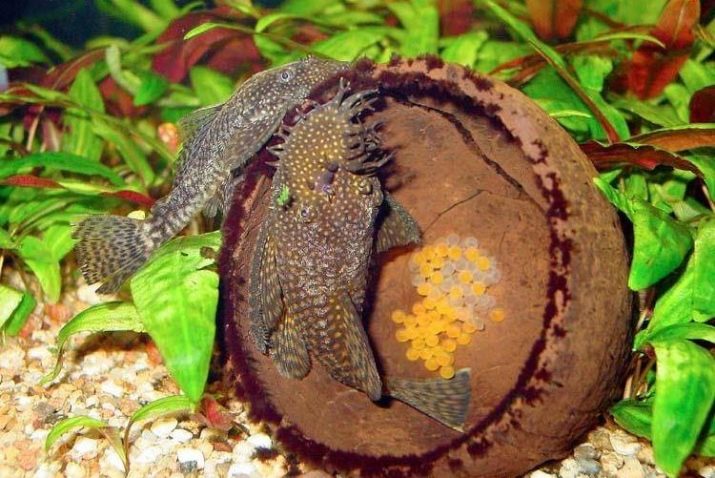
How many live in an aquarium?
If you create the most acceptable conditions for catfish, then the life expectancy is 8 years. Under natural conditions, these individuals live 100 years or more. Chain catfish (known as loricarias) with good care will delight you up to 8 years.
Specimens of carapace or callichtite exist for an average of 6–7 years. And this is a very good result. Representatives of the family armored have a head covered with bone plates. A relatively large fish - platidoras, belonging to this category, in captivity exists up to 14 years. Under the usual conditions of the river, these creatures can live for more than 21 years.
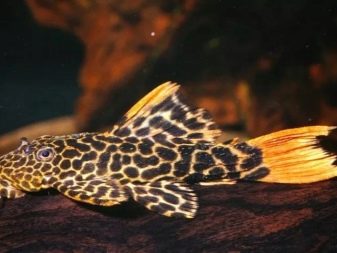
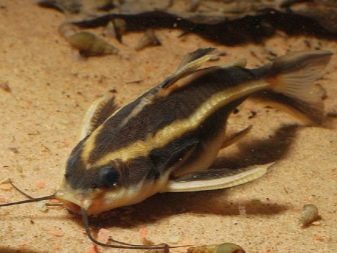
Soma synodontis live from 6 to 15 years. And even nature and free life did not endow them with longevity. Individuals live free for no more than 24 years, unlike other som-cat brethren.
Star synodontists are loved for their unusual appearance. It is rather difficult to predict how long these representatives can survive. But if you take approximate figures, it is possible to assume that 6 years or more. In the wild, they have a good life expectancy.
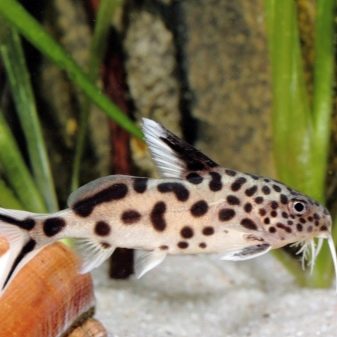
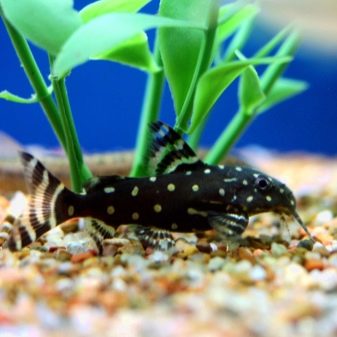
Catfish are relative centenarians. And to summarize a more specific result, find out how much time is allotted in the wild of a particular individual.
It is necessary to create good living conditions, and then your pets will achieve maximum age success.
On the content of speckled catfish, see the video below.
